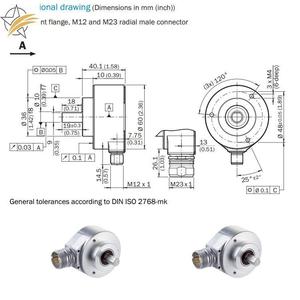Understanding the Incremental Encoder Circuit
The incremental encoder circuit is a sophisticated electronic component designed to provide precise positional feedback for rotating devices like motors and shafts. Utilizing the principles of optical or magnetic sensing, these circuits generate a series of output signals that indicate both the direction and the speed of movement. Their applications encompass a wide range of industries, from industrial automation and robotics to consumer electronics and automotive systems.
Types of Incremental Encoder Circuits
Incremental encoders come in various forms, catering to different applications and operational demands. Here are the primary types:
- Optical Incremental Encoders: Utilize light beams and photoelectric sensors to detect rotation. They are known for their high accuracy and resolution.
- Magnetic Incremental Encoders: Use magnetic fields to determine position. These encoders can operate in harsh environments and are less prone to dust and mechanical wear.
- Capacitive Incremental Encoders: Leverage variations in capacitance caused by the encoder's rotation. They are typically used in applications where space is limited.
- Absolute Incremental Encoders: While primarily considered absolute encoders, they can also function incrementally, providing both position and motion feedback.
Applications of Incremental Encoder Circuits
Incremental encoder circuits serve a vast array of applications across numerous fields, making them vital components in modern technology:
- Industrial Automation: Used to control servo motors for precise movement in manufacturing machinery.
- Robotics: Essential for joint and wheel position feedback, allowing precise navigation and manipulation.
- Automotive Systems: Employed in anti-lock braking systems (ABS) to measure wheel rotation speed and prevent skidding.
- Consumer Electronics: Found in applications like computer mice and game controllers for position tracking.
Features and Advantages of Incremental Encoder Circuits
The advantages of using incremental encoder circuits make them indispensable in several high-tech applications:
- High Resolution: Provides fine precision in position sensing, essential for applications needing tight control.
- Compact Size: Many models are designed to be space-efficient, making them suitable for installations with limited space.
- Robustness: Many incremental encoders, particularly magnetic types, are resistant to dust, moisture, and mechanical impacts, enhancing durability.
- Cost-Effectiveness: Compared to absolute encoders, incremental encoders are generally less expensive while still offering excellent performance.
- Flexible Integration: They easily integrate with various digital systems due to standard output signal formats such as quadrature signals.





























































































































































